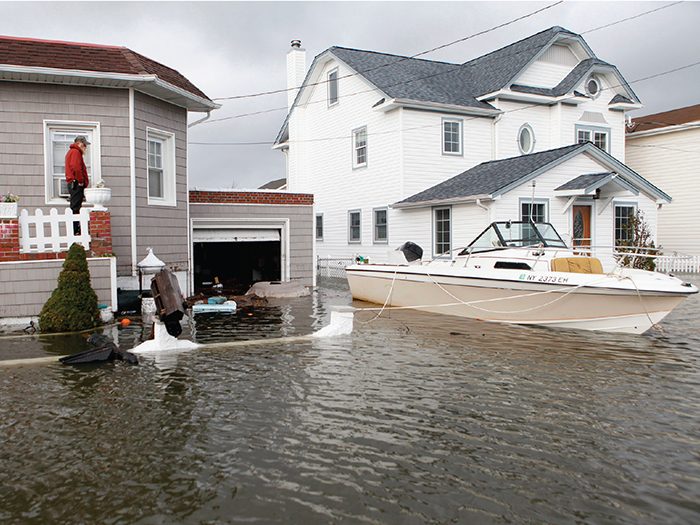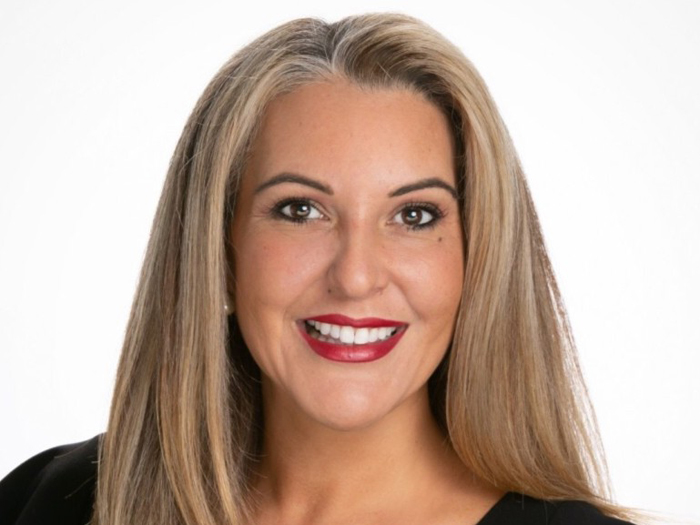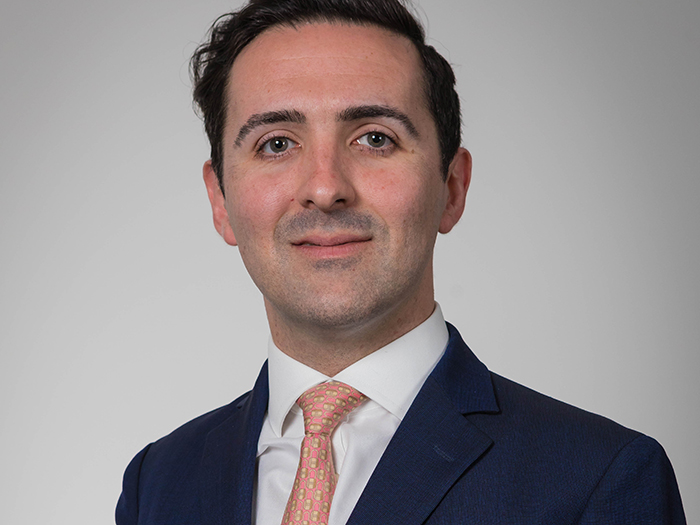2017 Most Dangerous Emerging Risks
Coastal Mortgage Value Collapse

Rising seas encroach on our cities and towns at rates exponentially greater than before.
So-called King Tides, urged on by climate change and brought about by the close alignment of the sun, the moon and the earth are already producing flooding in Miami 10 days a year.
Debate the cause if you want to expend more hot air denying science. But it’s a fact that resale values of coastal homes in Miami, Atlantic City and Norfolk, Va. are already starting to erode.
These bellwether locations signify a growing and alarming threat; that continually rising seas will damage coastal residential and commercial property values to the point that property owners will flee those markets in droves, thus precipitating a mortgage value collapse that could equal or exceed the mortgage crisis that rocked the global economy in 2008.
“Insurance deals with extreme weather and billions of dollars of losses, but what we are talking about is uninsured loss of fair market value that is trillions of dollars in losses and I am not talking about in 2100, I’m talking about the next mortgage cycle,” said Albert Slap, president of Coastal Risk Consulting, a Florida firm that provides lot by lot modeling of flood risk.
Models created by Coastal Risk Consulting show flooding rates of Miami properties are going to rise substantially between now and 2050, within that 30–year mortgage cycle he refers to.

Albert Slap, president, Coastal Risk Consulting
“The results of our modeling and that of NOAA and many others shows that the increase in flooding on people’s properties, due to astronomy and physics, not weather, is alarming and significant and in all likelihood is not backstopped by insurance,” Slap said.
Adding to the threat is that real estate agents and homeowners aren’t incentivized or required to reveal how frequently properties flood, or how exposed they are to flooding.
“Forty percent of Americans live on the coast, which means you have trillions of dollars at risk for climate change that hasn’t been modeled for default increases,” Slap said.
The Pew Charitable Trusts, as part of its testimony to Congress as the National Flood Insurance Program undergoes review, is asking that all homeowners be required to report on that risk.
Many coastal homes are backstopped by the NFIP, which is still billions in debt from its losses in the Katrina-Wilma-Rita hurricane cycle of 2005.
Private sector insurers are eyeing ways to write more flood business. But if the NFIP suffers further losses, and private sector insurers retreat, what then?
“If you look at it systematically, if a broad number of insurance companies decide that they need to triple homeowners insurance rates, or they need to pull out of a local market, that would create a lot of problems in terms of the value of the properties that are in that locale,” said Cynthia McHale, president of insurance for Ceres, a nonprofit that advocates for sustainable business practices.
In November, Sean Becketti, the chief economist for the economic and housing research group at Freddie Mac, the federally backed housing lender, co-authored a paper that documented this very risk.
The paper referenced the fact that daily high-water levels in Miami are increasing at a rate of an inch per year, much faster than the rate of global sea-level rise. Other cities along the Eastern seaboard are experiencing a 10-fold increase in the frequency of flooding, according to Freddie Mac.
“A large share of homeowners’ wealth is locked up in the equity in their homes,” Becketti wrote.
“If those homes become uninsurable and unmarketable, the values of the homes will plummet, perhaps to zero.”
“Forty percent of Americans live on the coast, which means you have trillions of dollars at risk for climate change that hasn’t been modeled for default increases.” —Albert Slap, president, Coastal Risk Consulting
In the housing crisis of 2008, according to Becketti, a significant percentage of borrowers continued to make their mortgage payments even though the value of their homes was less than their mortgages.
“It is less likely that borrowers will continue to make mortgage payments if their homes are literally underwater,” Becketti said.
“As a result, lenders, servicers and mortgage insurers are likely to suffer large losses,” he said.
Insurers would suffer, according to Ceres’ McHale, and not just as backers of insurance policies.
“Insurance companies themselves are major commercial and residential mortgage holders,” she said.
“They assume that the property is going to hold its value and act as collateral if needed. If it doesn’t hold its value, where is the collateral?”
“Not only will their mortgages be metaphorically underwater, they are going to be literally underwater,” said Slap.
“And there is no coming back from it.”
“The New York Times” published a piece in November that detailed the case of Roy and Carol Baker of Sarasota, Fla. The Bakers tried for months to sell their home in Siesta Key, according to the story, but buyers kept backing out when they discovered the annual flood insurance premium was about $7,000.
“This experience will become more common, economists say, as the federal government shifts away from subsidizing flood insurance rates to get premiums closer to reflecting the true market cost of the risk,” reporter Ian Urbina wrote in his piece.
The Climate Race
What Becketti, Slap and others say is true, said Helen Thompson, a director, commercial marketing at Esri, the mapping and analytics company that works with insurers and property owners.
But she said there is a solution, the public and private sector working together to address the problem: That and about $4 trillion.
“The challenge for a lot of people is to understand the scope and the scale of this issue, and in some ways, like the mortgage bubble before, if you are ignorant of the problem, you can’t fix it,” she said.
“I think taking action means crafting a discussion of the problem and moderated expressions of what those solutions are, based on science and analysis and not hyperbole,” she said.
It’s well documented how dire the nation’s infrastructure needs are.
Thompson compares the current dilemma posed by climate change and sea rise in the U.S. and elsewhere to the cholera epidemic that ravaged London in the mid-19th century. What’s needed now, she said, is something akin to the massive public works projects that were undertaken to provide Londoners with cleaner drinking water.
“They realized the social and political cost of this,” Thompson said.
“We need to change our thinking to say this is not just about handing debt to our children, it’s about maintaining the same level of opportunity and quality of life for our children,” she said.
Thompson points to China, which she says is investing in climate change-resistant ports and additional infrastructure internationally to remain economically competitive.
“It’s in their best interests as a global manufacturing hub to mitigate the cost and the impact of climate change because of how much collateral damage it will do to their economies,” Thompson said.
She said the U.S. needs to go down the same path, and step on it.
“I call it the ‘climate race,’ like the space race,” she said.
“The infrastructure needs to be created to deal with this, and the United States is massively lagging.”
Slap envisions another solution, a “climate ready” mortgage program, similar to the federal government’s energy efficient mortgage program, which gives property owners federally guaranteed loans to make energy efficiency upgrades.
Such a program would provide loans for sewage backflow preventers, changing the grade on a driveway, or elevating a home on a platform
Thompson said the massive infrastructure projects she envisions could include moving the vital container operations at the Port of Miami inland and constructing a berm to defend against sea water.
Office building owners in Lower Manhattan, which was so damaged by Superstorm Sandy, are increasingly investing in flood prevention barricades and moving critical building components like HVAC and plumbing components to higher floors.
Americans just got a chilling reminder of the dangers presented by changing weather patterns and crumbling infrastructure. Fears that the Oroville Dam on California’s Feather River would buckle under heavy rainfall got everyone’s attention.
“People are looking at that and saying, ‘We didn’t realize what this change in weather patterns means in the long term,’ ” Thompson said, and they are relating the Oroville event to infrastructure in their own towns and the risks they present.
As the NFIP undergoes its annual review in Congress, Slap said administrators would do well to exclude King Tide events.
“If you were to go to NFIP and ask them if they cover King Tide flooding, they would say, ‘If it meets our definition of flood then we must cover it.’ This is a red flag, because what you are saying is the government and the taxpayers are covering sea level rise and that is not something we can afford,” Slap said. &
________________________________________________________________
2017 Most Dangerous Emerging Risks
 Artificial Intelligence Ties Liability in Knots
Artificial Intelligence Ties Liability in Knots
The same technologies that drive business forward are upending the nature of loss exposures and presenting new coverage challenges.
 Cyber Business Interruption
Cyber Business Interruption
Attacks on internet infrastructure begin, leaving unknown risks for insureds and insurers alike.
 U.S. Economic Nationalism
U.S. Economic Nationalism
Nationalistic policies aim to boost American wealth and prosperity, but they may do long-term economic damage.
 Foreign Economic Nationalism
Foreign Economic Nationalism
Economic nationalism is upsetting the risk management landscape by presenting challenges in once stable environments.












